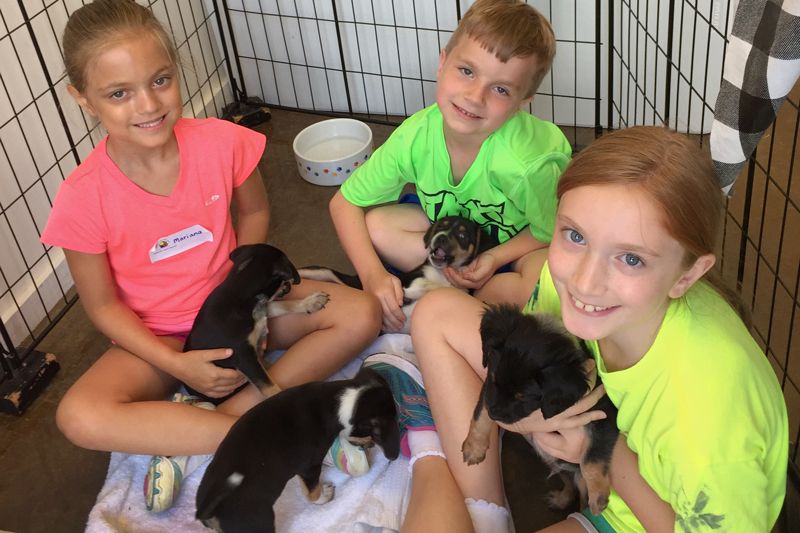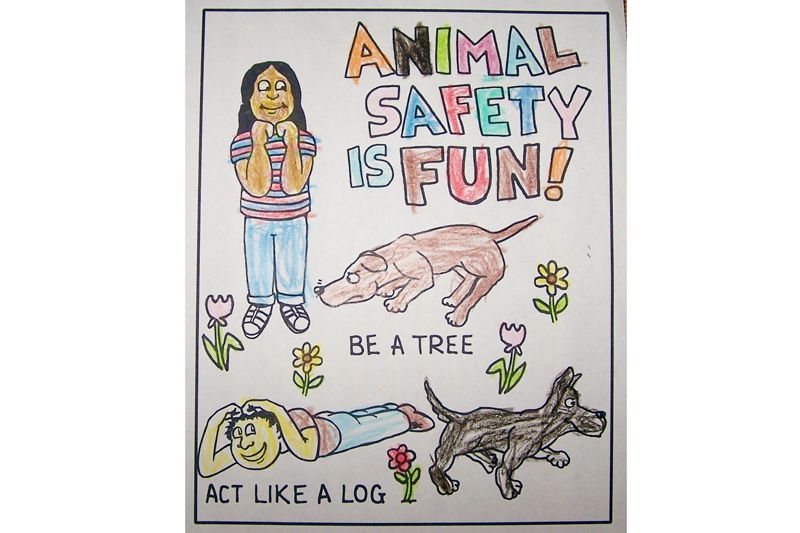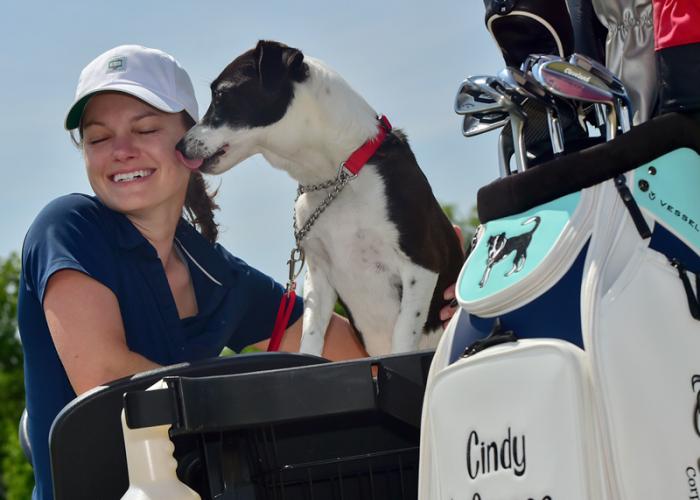Play it safe
Shelter programs teach kids how to interact with dogs

“How rude and creepy would it be if I—a strange lady—just came up and put my face in your face?” asks Ana Rodriguez, humane education coordinator for Citizens for Animal Protection, a Texas-based nonprofit.
That’s what she asks children when she is invited to schools or kids’ groups to teach dog bite prevention. During these presentations, she encourages children to think about what it’s like from the animal’s perspective when people get in the face of a dog they don’t know or grab at the family pet who isn’t in the mood to play.
Kids are the most common victims of dog bites, according to the American Veterinary Medical Association, and some shelters are making it a priority to educate their community’s youngest members about safe behavior around dogs. Whether shelter staffers have specific safety programs or incorporate the information into other presentations, they’re teaching kids how to properly interact with animals—helping to prevent injuries and unnecessary shelter surrenders.
Polite introductions
The San Diego Humane Society has various humane education programs for kids, and each one includes meeting an animal. Whether children are meeting a rabbit or dog, they’ll learn the proper way to approach and pet the animal, says education manager Amelia Curtis.
“[In] all of our lessons, we hope that children are learning a greater lesson of respecting all living things, [and] that they’re going to take this lesson with them, share it with their friends and just be respectful to animals moving forward,” she says.
For interactions with dogs, the three basic rules kids learn are: Ask your parent (or the adult watching you) if you can pet the dog; ask the owner (or the adult responsible for the animal) if you can pet the dog; and ask the dog’s permission by reading her body language.
To teach children dog body language, Curtis recommends resources from The Family Dog, a dog training company that produces videos and other materials tailored for kids.
Jason Taylor, director of youth education initiatives at the Atlanta Humane Society, uses flashcards to teach the basic body language that indicates whether a dog is happy, alert or afraid.
Atlanta Humane’s Pet Permissions program teaches preschoolers and kindergartners how to properly greet dogs and cats. The classes are quick (less than 30 minutes) to match kids’ attention spans, says Taylor. “You’ve got to get in, deliver and then get out before you lose them altogether.”
At the end of each presentation, Taylor reviews the body language cues and the three permissions to see how well the group retains the information. Kids usually remember they have to ask their parents and the owner before they pet the dog, but tend to forget about getting permission from the dog herself, so going over that part again is important, he says. Kids end up guessing who else they need permission from, and “it always turns into ‘my aunt?’”
The shelter tailors the class to a young age group because children at an exploratory age are particularly prone to approach unknown animals, Taylor explains.
And since a bad experience can have a lifelong effect on how a child views animals, he sees his work as having an impact far into the future. “I just want them to love [animals] at this age and be respectful of them, so when they’re older, they’ll be responsible for our dogs and cats.”

Accidental encounters
Just as kids are taught from a young age to stop, drop and roll if their clothing catches on fire, or to look both ways before they cross the street, some shelters and experts are trying to impart another life safety skill to children: “Be a tree” and “be a rock” (or “act like a log”) if a stray dog approaches you.
“Be a tree” means stand completely still, looking down, with your arms folded up under your neck. “Be a rock” or “act like a log” is for situations where you’re already on the ground or get knocked down; you should stay on the ground, face down, covering your head and neck.
At Collierville Animal Services in Tennessee, director Nina Wingfield incorporates this information into bite prevention classes in the community as well as birthday parties and tours at the shelter. In addition to these rules, she tells children they should leave a free-roaming dog alone, cross to the other side of the street, if possible, and tell an adult there’s a loose dog.
It’s important to tell them not to run or scream, which might be their first instinct, says Wingfield.
Retired veterinarian Joseph Michael Cornwell has been teaching children these safety rules through a program he developed—Animal Safety Is Fun!—since the 1970s. While running a veterinary practice in Ohio and working as a consultant to a community health commissioner, he became interested in why dog bites happen. Over the years, he’s presented his program at shelters and community groups and has sent his program materials to organizations in all 50 states and 12 countries, he says.
While his medium has changed over the years—the first format for his presentation was Super 8mm film, he says, and now it’s digital film—the message hasn’t. His program includes a video to introduce kids to the basic concepts, a teachers and parents guide and a coloring page. The presentation goes over “be a tree” and “act like a log” and includes other safety tips for kids interacting with their own dogs.
“What was good [practice] when we started doing this in the late ’70s and ’80s is still very sound,” says Cornwell. “It’s just a matter of trying to get it out to as many people as we can, so we get kids educated with that … life safety skill.”






